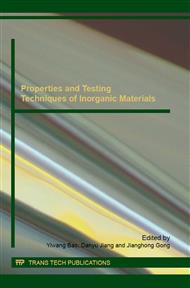p.311
p.315
p.323
p.327
p.331
p.335
p.339
p.343
p.347
Effect of ZrO2 Additive on the Properties of MgO-Cr2O3 Refractory Used for RH Degasser
Abstract:
To improve the properties and RH degasser slag corrosion resistance of magnesia-chrome refractory, the effect of the addition of ZrO2 was investigated. The results showed that the presence ZrO2 additive can densify the magnesia-chrome samples due to promotion of grain boundary activities and ultimately direct bond formation, which improved the high temperature mechanical properties and corrosion resistance. The results also indicated that in the RH degasser slag system with a high ratio of calcia to silica, the slag resistance behavior of magnesia-chrome composite added ZrO2 could be described as follows: the ZrO2 reacts with CaO to form the calcium zirconate compound which is densification lay and simultaneously, could increase corrosion resistance performance by blinding pore and thickening slag viscosity. Therefore, it is expected to be the major reason for the ZrO2 enhanced corrosion resistance behavior observed for magnesia-chrome refractory.
Info:
Periodical:
Pages:
331-334
Citation:
Online since:
February 2016
Authors:
Keywords:
Price:
Сopyright:
© 2016 Trans Tech Publications Ltd. All Rights Reserved
Share:
Citation:


